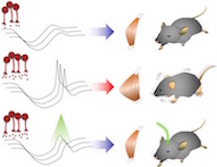Professor Daesoo Kim of the Department of Biological Sciences has discovered the central cause of symptoms seen in those afflicted by Parkinson’s disease. This potentially revolutionary research was done in collaboration with a research team led by Dr. George Augustine from Nanyang Technological University.

Parkinson’s disease (PD) is a disorder that degenerates the central nervous system of those affected. The disease affects the motor system, causing tremors, abnormal muscular rigidity, and inability or difficulty in carrying out voluntary movements. This debilitating disorder is known to be partially caused by a deficiency of dopamine, a neurotransmitter that plays a major part in the reward and pleasure centers in the brain. So, the research team closely inspected the processes in which dopamine held a role.
This inspection directed the team’s attention towards the basal ganglia, a group of nuclei in the brain in charge of controlling complex motor behavior. The deficiency of dopamine was previously thought to cause the basal ganglia to more firmly inhibit thalamic neurons. The research team decided to test this past belief through the use of optogenetics. This biological technique involves using light to control cells in living tissue. The team modulated a basal ganglia output nuclei called the globus pallidus medial (GPm) using the technique. It was discovered that thalamic neuron activity was, at first, also inhibited when inhibitory GPm inputs were activated. However, many of the thalamic neurons produced rebound firing, starkly increasing activity right after the inhibition. The rebound excitation was seen to produce the symptoms seen in PD patients.
With further testing on dopamine-deficient mice, which exhibited PD-like tremors and slow movement, the team was able to demonstrate that the rebound firing was causing the abnormalities in the mice’s motor systems. Professor Kim’s team also demonstrated that by blocking the rebound through optogenetics or T-type calcium channel blockers, the affected mice would no longer show the symptoms.
This study was published in Neuron with Dr. Jeongjin Kim, a former postdoctoral fellow at KAIST, as the lead author. She asserted, “The therapeutic implications of this study for the treatment of Parkinsonian symptoms are profound. It may soon become possible to remedy movement disorders without using dopamine.”

